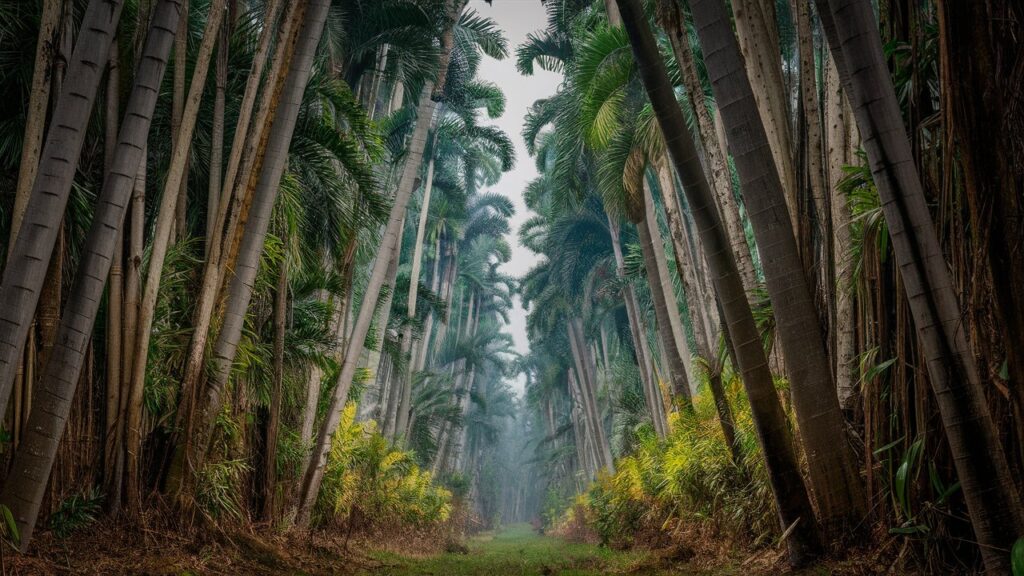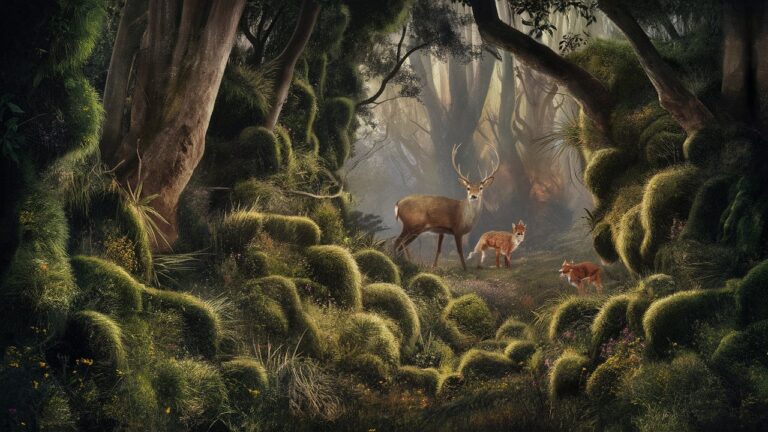Introduction: Whispers in the Cane
Across the fertile floodplains and river valleys of the southeastern United States, a unique and vanishing ecosystem whispers secrets of a wilder past. This is the canebrake, a dense, almost impenetrable thicket dominated by the towering native bamboo, giant cane (Arundinaria gigantea). Once sprawling across millions of acres, forming vast “cane forests” that shaped landscapes and cultures, the canebrake has suffered a dramatic decline, dwindling to fragmented patches hidden in remote corners. Yet, within these resilient stands lies an ecological powerhouse, a biodiversity hotspot, and a living archive of cultural heritage. Understanding the canebrake – its intricate ecology, its historical significance, its current plight, and its vital role in restoration – is crucial for appreciating and conserving this irreplaceable piece of the American South. This journey delves into the heart of the cane, exploring its secrets and championing its return.
The Defining Giant: Unveiling Arundinaria gigantea
At the very core of the canebrake ecosystem lies its namesake and foundational species: giant cane (Arundinaria gigantea). This remarkable plant is the only native bamboo in North America east of the Mississippi River, belonging to a monotypic genus within the grass family (Poaceae). Unlike its often-invasive Asian relatives, giant cane is an integral part of the southeastern ecological fabric. It forms dense colonies through an extensive network of underground rhizomes, sending up woody, evergreen culms (stems) that can reach astonishing heights of 10 to 25 feet or more under optimal conditions. These culms, typically 1-2 inches in diameter, are remarkably strong yet flexible, clothed in distinctive, persistent leaf sheaths near their base and crowned with arching clusters of slender, lance-shaped leaves. Giant cane exhibits fascinating growth habits, primarily spreading vegetatively via its rhizomes to form extensive clones. While it does flower and set seed, these events are infrequent and unpredictable, sometimes occurring on cycles spanning decades, after which the flowering cane typically dies. This reproductive strategy makes large-scale natural regeneration challenging, especially in the face of habitat loss. The plant’s preference for moist, fertile soils along river corridors, floodplains, and bottomlands defines the specific environmental niche where the canebrake thrives.
An Engine of Biodiversity: The Canebrake as Wildlife Haven
Far from being a biological desert, the canebrake ecosystem pulsates with life, functioning as a critical sanctuary for an extraordinary array of wildlife, some of which are rare or highly specialized. The dense structure provides unparalleled cover, creating a labyrinthine refuge from predators and harsh weather. This wildlife habitat is particularly vital for numerous bird species. The once-abundant Bachman’s Warbler, now feared extinct, was inextricably linked to mature canebrakes. Species like the Swainson’s Warbler, Prairie Warbler, Northern Parula, and various thrushes and sparrows still heavily depend on these thickets for nesting, foraging, and shelter. The dense overhead canopy and complex understory offer perfect nesting sites and abundant insect prey. Mammals, too, find essential resources within the canebrake. White-tailed deer utilize the cover for bedding and fawning, while black bears forage on the cane’s tender shoots and fruits found within the habitat. Smaller mammals, including rabbits, rodents, foxes, and even bobcats, navigate the intricate pathways beneath the cane. Reptiles and amphibians benefit from the moist, shaded microclimate. Perhaps most famously, the canebrake provides critical winter foraging grounds for the federally endangered Red-cockaded Woodpecker clans in some longleaf pine ecosystems, where cane grows in the open understory maintained by frequent fire. This incredible concentration of species underscores the biodiversity hotspot status of healthy canebrakes.
Nature’s Infrastructure: Vital Ecosystem Services of the Cane
The significance of the canebrake extends far beyond its value as wildlife habitat; it performs indispensable functions that benefit the broader landscape and human communities through ecosystem services. One of its most crucial roles is in riparian zone stabilization and erosion control. The dense, interlocking network of cane rhizomes and roots binds the soil with exceptional tenacity, especially along vulnerable riverbanks and floodplains. During flood events, which are natural occurrences in these areas, the canebrake acts like a living sponge and filter. It physically slows floodwaters, reducing their erosive power and velocity, while simultaneously trapping sediment and filtering pollutants like agricultural runoff, excess nutrients, and contaminants before they reach sensitive waterways. This natural filtration significantly improves water quality protection downstream. Furthermore, the deep root systems enhance water infiltration into the ground, recharging aquifers and contributing to overall watershed health. By mitigating erosion and filtering water, the canebrake ecosystem provides a cost-effective, natural form of infrastructure that protects water resources, reduces sedimentation in reservoirs, and enhances landscape resilience – services that are increasingly valuable and expensive to replicate artificially.

Echoes of the Past: Cultural and Historical Significance
The canebrake is deeply woven into the cultural and historical tapestry of the southeastern United States, particularly for Indigenous peoples and early European settlers. For millennia, Native American tribes, including the Cherokee, Choctaw, Creek, and others, utilized giant cane for an astonishing array of purposes, demonstrating profound traditional ecological knowledge. The strong, straight culms were expertly crafted into intricate river cane basketry, a highly developed art form producing durable and beautiful containers for storage, carrying, and winnowing. Cane was also essential for constructing fishing weirs, blowguns (for hunting small game), mats, furniture frames, arrow shafts, and even structural elements for dwellings. Beyond its material uses, the canebrake provided important sources of food; the tender young shoots (canebreaks) emerging in spring were, and still are, a nutritious and palatable vegetable. For early European explorers and settlers, the canebrake presented both an obstacle and a resource. Vast stands were described as being nearly impossible to traverse on horseback or foot, shaping settlement patterns. Settlers also adopted the use of cane for livestock forage (especially in winter), fencing, furniture, and fishing poles. The very term “canebrake” evokes a sense of the wild, dense landscapes that characterized the pre-colonial and early colonial South, a landscape feature that profoundly influenced the region’s history and folklore.
A Landscape in Retreat: The Decline of the Canebrake
Tragically, the vast majority of the canebrake ecosystem that once defined southeastern river valleys has vanished. Estimates suggest a staggering loss exceeding 98% of its original extent. This dramatic habitat loss stems from a complex interplay of human activities. The single largest driver was the conversion of fertile floodplain habitats to agriculture. The rich alluvial soils coveted by farmers were exactly where giant cane thrived, leading to wholesale clearing for crops like cotton, corn, and soybeans. Widespread livestock grazing, particularly free-range practices in the past, heavily impacted existing canebrakes, as cattle readily consume the tender new shoots and trample rhizomes, preventing regeneration. The suppression of natural fire regimes, crucial for maintaining the open understory conditions giant cane needs in many ecosystems (like longleaf pine savannas), allowed woody shrubs and trees to encroach and shade out the cane. The canebrake is also highly sensitive to changes in hydrology. Damming rivers for flood control, hydroelectric power, or reservoirs alters natural flooding patterns, disrupts sediment deposition crucial for cane growth, and can permanently flood existing stands. Stream channelization and levee construction further isolate floodplains and degrade habitat. Urbanization and development continue to claim remaining fragments. This constellation of pressures has relegated the canebrake to a shadow of its former self, existing now as small, often degraded patches.
Restoring the Rattle: Canebrake Conservation and Revival
Despite the severe losses, hope for the canebrake ecosystem persists through dedicated habitat restoration efforts. Recognizing its ecological and cultural importance, conservationists, land managers, tribal nations, and private landowners are increasingly working to protect remaining fragments and actively restore this unique habitat. Canebrake conservation begins with identifying and safeguarding existing stands, often through land acquisition, conservation easements, or cooperative management agreements. Protecting the riparian corridors where cane grows is paramount. Active restoration techniques are being developed and refined. This involves planting rhizome sections or young cane plants sourced from local, genetically appropriate stock. Successful establishment requires careful site selection – moist, fertile soils with adequate sunlight are essential. Crucially, restoration often necessitates reinstating the disturbance ecology that maintained historical canebrakes. This frequently means the careful, prescribed application of fire to reduce woody competition and stimulate cane growth, mimicking the natural fire regimes suppressed for decades. Managing invasive plant species that outcompete cane is another critical component. Partnerships are vital, with organizations like The Nature Conservancy, Native American tribes, state wildlife agencies, and universities collaborating on research and restoration projects. These efforts aim not just to bring back the cane, but to re-establish the entire ecosystem function it supports.
Conclusion: Reclaiming a Legacy in the Cane
The canebrake stands as a powerful symbol of both loss and resilience in the American landscape. Once a dominant and defining ecosystem, its near-erasure serves as a stark reminder of the profound impact human activity can have on natural systems. Yet, within its remaining rustling stems lies an undeniable ecological treasure – a biodiversity hotspot sheltering specialized wildlife, a natural engineer providing indispensable ecosystem services like erosion control and water purification, and a living repository of deep cultural heritage. The story of the canebrake is not merely one of historical significance; it is a narrative urgently relevant to our present and future. Restoring these unique thickets represents an investment in landscape health, water quality, and wildlife conservation. It is an act of cultural reclamation and ecological healing. The challenges of habitat loss are significant, but the growing momentum behind canebrake conservation and restoration offers a path forward. By understanding, valuing, and actively working to revive the canebrake ecosystem, we reclaim not just a plant community, but a vital piece of the southeastern wilderness legacy, ensuring that the whisper of the wind through the cane continues to resonate for generations to come.
Frequently Asked Questions (FAQs) about the Canebrake:
- Q: What exactly is a canebrake?
A: A canebrake is a specific type of ecosystem or plant community dominated by dense, nearly pure stands of giant cane (Arundinaria gigantea), North America’s only native bamboo east of the Mississippi. It typically occurs in moist, fertile soils of floodplains, river valleys, and bottomlands in the southeastern United States. - Q: Why are canebrakes so important ecologically?
A: Canebrakes are vital for several reasons: They are biodiversity hotspots providing essential cover and food for numerous wildlife species, including rare birds. They offer crucial ecosystem services by stabilizing riverbanks to prevent erosion, filtering pollutants from runoff to protect water quality, slowing floodwaters, and recharging groundwater. - Q: What happened to all the canebrakes? Why are they rare now?
A: Canebrakes have experienced catastrophic habitat loss, estimated at over 98%. The primary causes are conversion of floodplains to agriculture, destruction by intensive livestock grazing, suppression of natural fire regimes (which maintained open conditions), alteration of natural river flow and flooding by dams and channelization, and urbanization/development. - Q: Is giant cane the same as invasive bamboo?
A: No. While giant cane (Arundinaria gigantea) is a bamboo, it is a native species and an integral part of southeastern ecosystems. It generally forms dense stands but is not typically invasive in the aggressive, landscape-dominating way that non-native Asian bamboos (like Phyllostachys species) can be. It plays specific, beneficial ecological roles. - Q: Are there efforts to bring back canebrakes?
A: Yes, canebrake conservation and habitat restoration efforts are growing. These involve protecting remaining stands, planting cane using rhizomes or seedlings, managing invasive species, and crucially, reintroducing prescribed fire to mimic the natural disturbance ecology that historically maintained these ecosystems. Tribes, conservation groups, and agencies are actively involved. - Q: Did people historically use giant cane?
A: Absolutely. Native American tribes relied heavily on giant cane for centuries, using it for intricate river cane basketry, blowguns, fishing weirs, mats, building materials, and food (young shoots). Early European settlers also used it for fencing, furniture, fishing poles, and livestock forage, acknowledging its utility despite the challenge of traversing dense stands.
